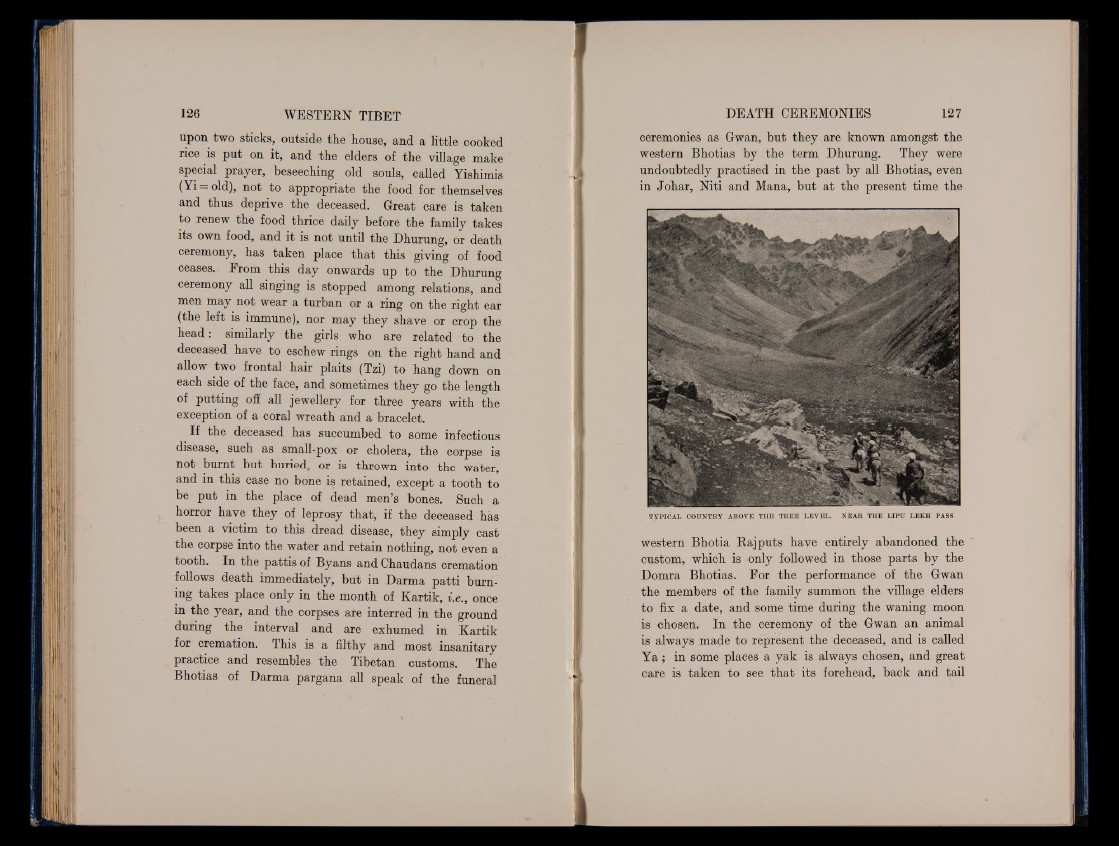
upon two sticks, outside the house, and a little cooked
rice is put on it, and the elders of the village make
special prayer, beseeching old souls, called Yishimis
(Yi — old), not to appropriate the food for themselves
and thus deprive the deceased. Great care is taken
to renew the food thrice daily before the family takes
its own food, and it is not until the Dhurung, or death
ceremony, has taken place that this giving of food
ceases. From this day onwards up to the Dhurung
ceremony all singing is stopped among relations, and
men may not wear a turban or a ring on the right ear
(the left is immune), nor may they shave or crop the
head: similarly the girls who are related to the
deceased have to eschew rings on the right hand and
allow two frontal hair plaits (Tzi) to hang down on
each side of the face, and sometimes they go the length
of putting off all jewellery for three years with the
exception of a coral wreath and a bracelet.
If the deceased has succumbed to some infectious
disease, such as small-pox or cholera, the corpse is
not burnt but buried, or is thrown into the water,
and in this case no bone is retained, except a tooth to
be put in the place of dead men’s bones. Such a
horror have they of leprosy that, if the deceased has
been a victim to this dread disease, they simply cast
the corpse into the water and retain nothing, not even a
tooth. In the pattis of Byans and Chaudans cremation
follows death immediately, but in Darma patti burning
takes place only in the month of Kartik, i.e., once
in the year, and the corpses are interred in the ground
during the interval and are exhumed in Kartik
for cremation. This is a filthy and most insanitary
practice and resembles the Tibetan customs. The
Bhotias of Darma pargana all speak of the funeral
ceremonies as Gwan, but they are known amongst the
western Bhotias by the term Dhurung. They were
undoubtedly practised in the past by all Bhotias, even
in Johar, Niti and Mana, but at the present time the
TYPICAL COUNTRY ABOVE THE TREE LEVEL. NEAR THE LIPU LEKH PASS
western Bhotia Rajputs have entirely abandoned the
custom, which is only followed in those parts by the
Domra Bhotias. Eor the performance of the Gwan
the members of the family summon the village elders
to fix a date, and some time during the waning moon
is chosen. In the ceremony of the Gwan an animal
is always made to represent the deceased, and is called
Y a ; in some places a yak is always chosen, and great
care is taken to see that its forehead, back and tail